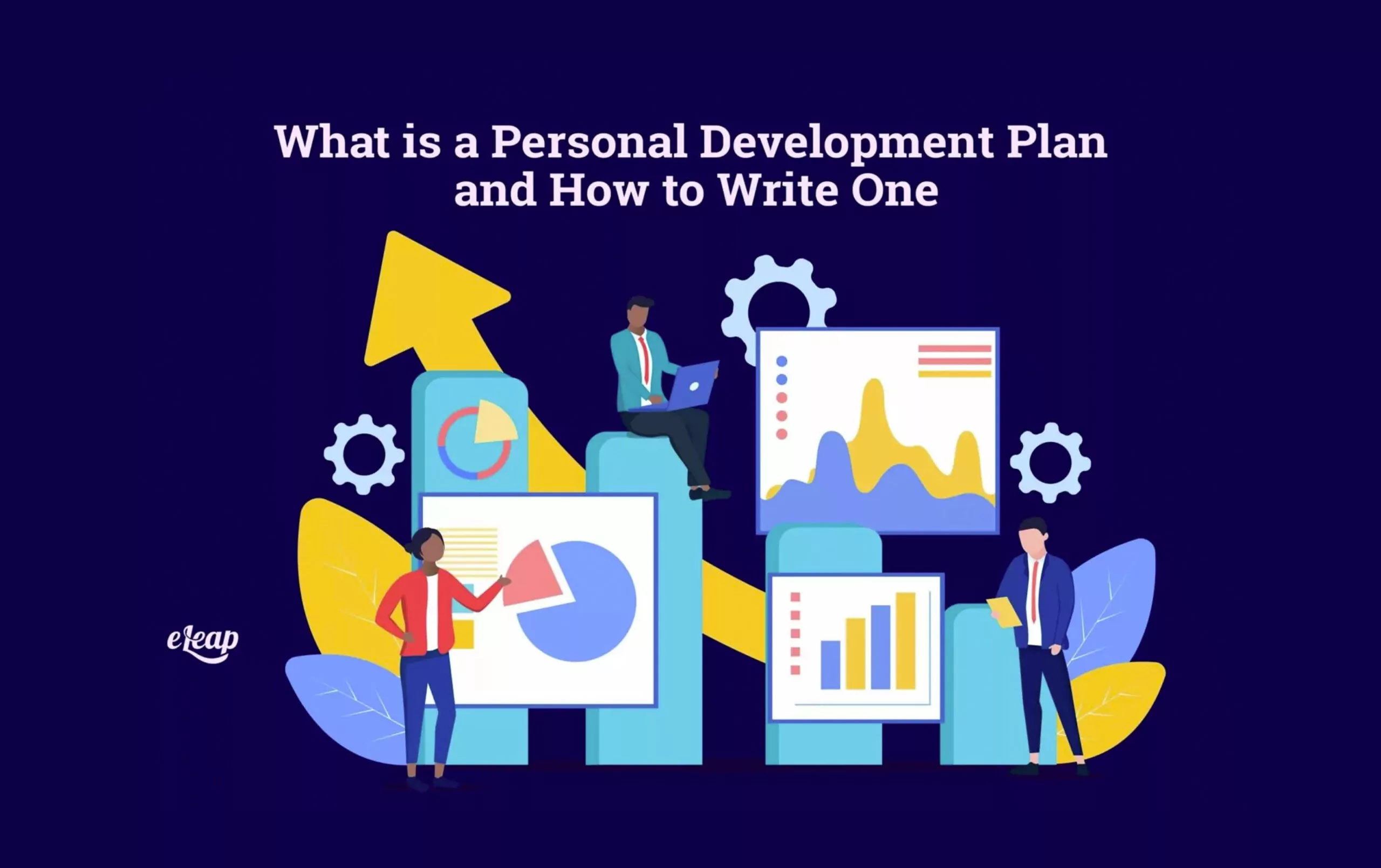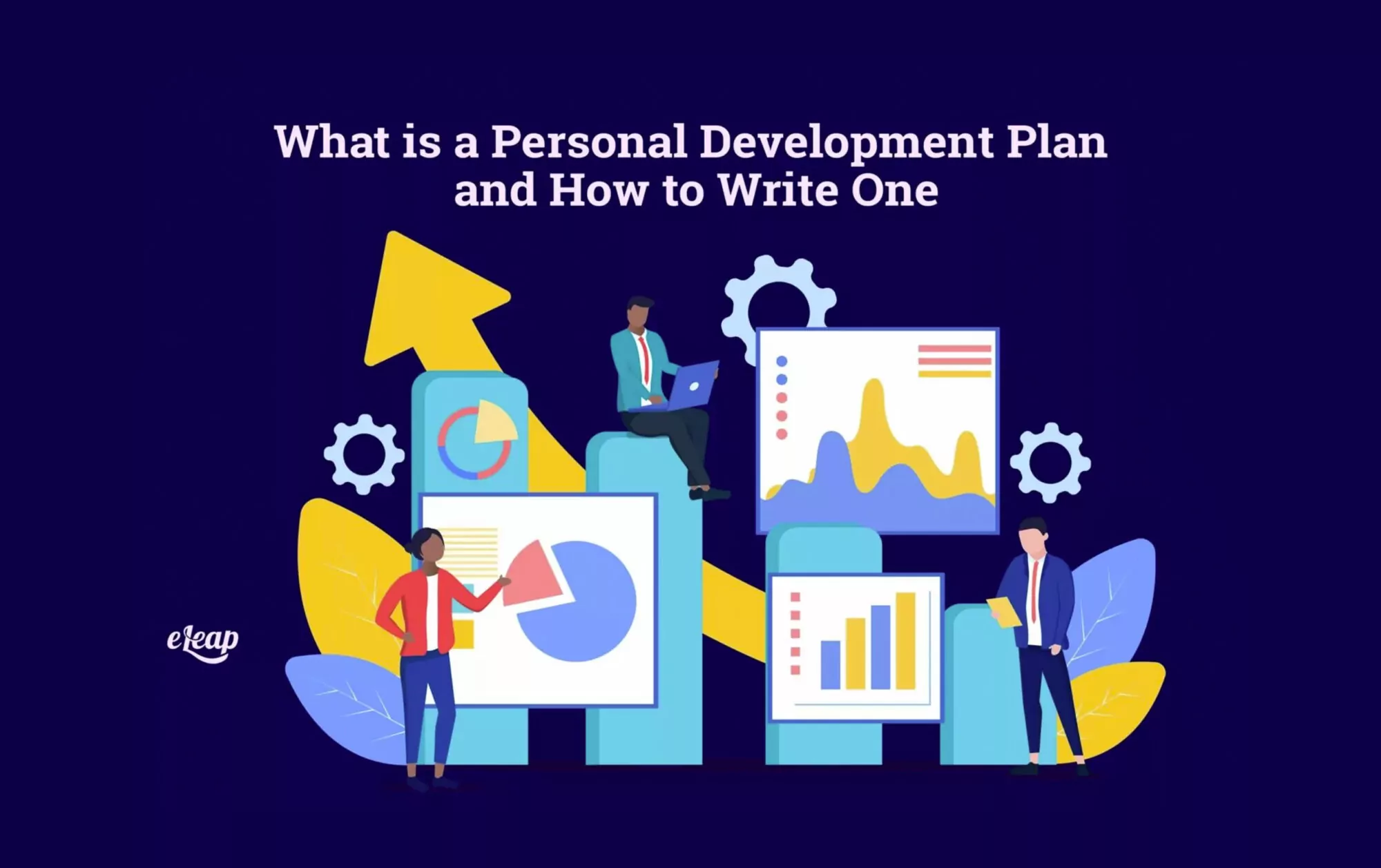What is a Personal Development Plan and How to Write One

Employee job satisfaction has a big impact on turnover rates within a company, and a personal development plan is one way an employee can increase their fulfillment at work and make them more likely to remain in a position for a longer period. This is valuable for the business in that it helps to keep good workers on board and helps the employees to reach their full potential, which causes them to do better quality work and ultimately increases the success of a company. Explore how eLeaP’s Performance Management Platform can simplify evaluations, boost productivity, and drive measurable results.

What is a Personal Development Plan?
A personal development plan, or PDP, is a plan specific to the employee that allows them to visualize how to progress in their skills. Through a personal development plan, employees articulate their goals, their strengths, and weaknesses, the areas in which they have room for improvement, what exactly they need to do to reach their goals, and any roadblocks that might be in the way of achieving them.
Personal development plans are often unique to the individual and are typically executed in environments such as higher education or even the workplace. It can even be a self-evaluation method to use in one’s personal life, such as learning a new skill or taking classes to change careers.
Specifically, in the workplace, personal development plans are part of the larger collection of strategies that fall under Continuing Professional Development, which is collectively a series of techniques for someone to manage their own learning and growth over time. Personal development plans may also be linked to performance reviews.
Benefits of Personal Development Plans
Writing a PDP has numerous benefits. It allows an employee to articulate their goals as well as their strengths and weaknesses. An employee that has increased awareness of these things is more employable and performs better on the job because they are more motivated. Having a clearly outlined PDP also allows an employee to track their progress toward their goals as they complete certain milestones. Feeling the accomplishment of that progression improves an employee’s confidence and sense of purpose, which overall gives them better mental well-being and reduces stress related to work. It’s the ultimate way to optimize one’s potential.
SWOT Analysis and Personal Development Plan
SWOT, which stands for Strengths, Weaknesses, Opportunities, and Threats, is a long-established business psychology technique implemented at either the organizational level or the individual level. When you apply the SWOT analysis to yourself, it essentially creates a personal development plan, as they focus on much of the same concepts. The aim of a SWOT analysis is to identify your strengths, call out and remedy your weaknesses, take advantage of opportunities within your reach, and neutralize threats to you completing your goals.
To identify your strengths, think about what you know you are good at. These are normally skills that you feel very confident in or things you normally receive a lot of praise for. It could also include certain resources or past experiences that give you a well-rounded toolkit for problem-solving. Strengths could also be considered accomplishments you are particularly proud of.
Pointing out your weaknesses can be a little difficult to face and make you feel very vulnerable, but that’s okay. The purpose of doing so is simply to identify where there is room for improvement. What things do you know you struggle with? Time management or organization? Maybe it’s your standard of punctuality or any other bad habits. Think of anything you might avoid doing at work because you don’t feel confident or genuinely don’t like doing that task. Do your weaknesses also come through in the feedback you receive from others?
When assessing opportunities that might be available to you that might help you reach your goals, consider the position of the place you’re employed. Is it a progressive company constantly pushing to break its own records and forge ahead? Does it sponsor continuing education for employee betterment? Perhaps you have some contacts you could reach out to for insight. Is there an internally advertised job opening that could allow you to get some advancement opportunities? Is there an ongoing project that you could step in with and help complete if it would help you use a different skill?
On the other side of the coin from opportunities, some threats or blocks could keep you from reaching your goal. Do your weaknesses have the propensity to develop into threats? Which of the threats you can identify are within your control, and which factors are outside of your control? How could you still manage to avoid them regardless to still reach your goals?
Writing Your Personal Development Plan
Your personal development plan will be individualized to you because it is based on your goals and your strengths and weaknesses. There’s no one right way to write your PDP but here is a simple framework to follow to get you started.
Your first step should be to complete a SWOT analysis so that you have identified all of the pieces that will make up most of your personal development plan. You’ll know what could help you to reach your goal as well as what could stand in your way. You’ll have an inventory of your current knowledge, skills, and desires, and you’ll know which of your skills you can rely on the most.
The next step is to identify your goal. This could be related to your personal life, your education, or your career and should be something that would equate to your advancement. Your goal should also be “SMART,” which stands for Specific, Measurable, Achievable, Relevant, and Time-bound.
Your goal should be specific in nature, and more narrowed down as opposed to broad. It should be measurable in that you can track your progress toward it. An achievable goal is realistic and reachable, even if it takes some effort. Relevant goals apply directly to your life. You wouldn’t set a goal to be a world-renowned brain surgeon if your passion is in human resources management. A time-bound goal has a realistic deadline, whether it’s short or long-term.
An example of a generic goal would simply be to want to learn to speak Spanish. While this goal would be put into “SMART” parameters, I would want to take a Spanish class over the summer to learn to speak Spanish before going on a trip to Spain in October. The second example follows all of the guidelines for being “SMART.”
The next step in writing your personal development plan is to itemize your action plan. This involves taking your SMART goal and boiling it down into actionable steps and breaking the timeline down into daily or weekly increments so that you can keep track of your progress as you go along.
Then, outline the specific strategies and resources you will use to reach this specific goal. Whether it’s enrolling in a class, conducting research, getting more experience, obtaining professional advice from a mentor, interviewing other people who have completed the same goals, or delegating your time to devote specifically to the goal.
Finally, start working toward your goal by following your personal development plan and tracking your progress. If you happen to be taking a class to reach this goal, your progress will be available to you to monitor through completed modules or test scores. If your goal does not involve a class, you could create your own progress tracker or list of accomplishments to track where you are in relation to reaching your goal.
Successful Personal Development Plans
For your personal development plan to be successful, half the battle is designing the plan, and the other half is following it. It does you no good to create the PDP and then do nothing with the work you’ve put into outlining it. It also might not work out perfectly at first, but thankfully, the process has involved a thorough assessment of your strengths and weaknesses, so troubleshooting your personal development plan should come relatively easily to you should you need to do that. You will be able to know if your PDP isn’t working by the fact that you aren’t hitting your benchmarks at the rate you thought you would, and if that’s the case, that’s okay. Simply reassess, adjust, and continue forward. Making adjustments as you go along will help your personal development plan be more successful.
In Summary
Personal development plans are great tools to give people autonomy in how they go about accomplishing their goals. In the workplace, PDPs can be great contributors to employee development and advancement, which aid in job fulfillment and reduce employee turnover. If your organization does not currently utilize PDPs with its employees, allowing your employees to participate in a personal development plan workshop could help create more confident and productive workers for your business.
The eLeaP Performance Management Platform, which includes a continuous performance management system, provides organizations with powerful options to attract and retain high-caliber team members.